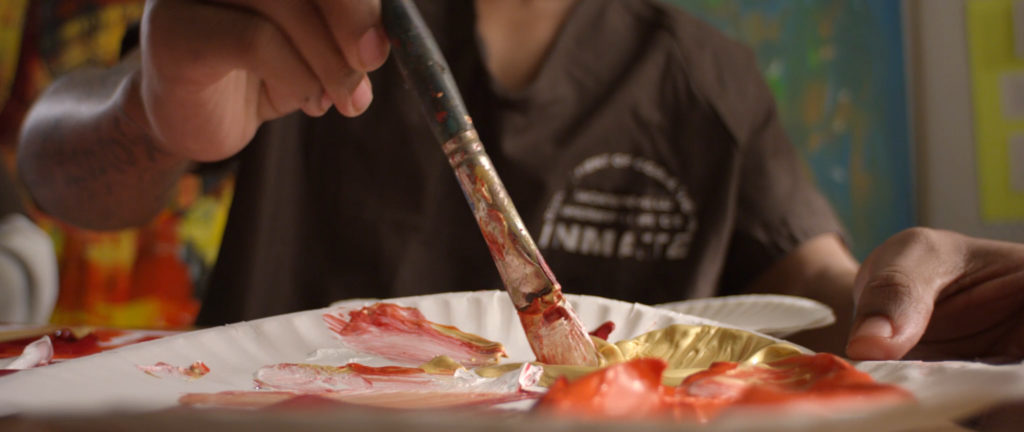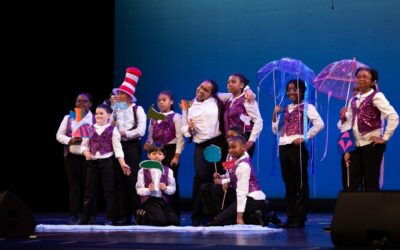Actions have consequences. This truth underlay the “tough on crime” stance I long held toward youth involved in the criminal justice system. But once I saw the difference arts education could make in their lives through our programming at the Cathedral Arts Project, I realized there’s more to the story.
At CAP our vision is for every child to have access to an arts-rich education. “Every child” includes those accused, rightly or wrongly, of criminal activity.
CAP’s programs provide these young people a non-threatening outlet for self-awareness, reflection and expression. Whether they are learning about art history, color theory and technique in visual arts, or body, energy and time in dance, they are learning so much more. We emphasize communication and social skills, nonviolent self-expression and new avenues for coping in difficult environments. They develop new ways of thinking about life from perspectives behind, within and beyond the time and space they currently inhabit. They imagine possibilities of a second chance.
Yes, actions have consequences. Not only their actions, but also ours collectively. Most youth who become part of the justice system experience trauma before, during and after, which often compounds mental illness. Estimates of the prevalence of mental illness among justice-involved youth are as high as 70 percent overall and 80 percent for girls.[i] Our justice system is simply not equipped to provide these children the treatment they need. In fact, whether the justice system is even set up for successful rehabilitation is debatable.

An investigation by the Miami Herald reported that Florida’s juvenile justice system adds new trauma to troubled youth. “With a one-year recidivism rate of 45 percent, it is a justice system that is supposed to reform juvenile delinquents, but too often turns them into hardened felons.”[ii] In the Fourth Circuit, State Attorney Melissa Nelson wants to write a different story so that more youth can be successfully reintegrated into society and transition to adulthood. Nelson created a Juvenile Justice Advisory Committee to develop programming that will reduce recidivism rates and crime.
What we and many others have found is that the arts reach these kids when nothing else has. Corrections Officer Eric Wesley with the Jacksonville Sherriff’s Office witnessed the difference our arts program made at the John E. Goode Pre-Trial Detention Facility. “Coming to this class gives them [the students] the opportunity, literally, just to be themselves. ‘I don’t have to be tough in this class, I just need to be me. I don’t have to walk around and act like nothing bothers me. I’m able to now express myself through art.’ And I think that’s the most important thing – them being able to realize, ‘Hey, it’s okay for you to be who you are.’”

That’s because they, like all of us, are creators at our core. Every child is born with the capacity to make positive contributions to society. Sometimes, it takes the arts to ignite that spark. The arts hold the power to transform – to transform feeling, to transform thinking, to transform doing. Through arts education, these children move to a place where they can experience that transformation and learn at an entirely different level.

Yet even as they learn, it is equally true we have much to learn as well.
The most important lesson is that we can’t write off youth involved in the justice system. Actions have consequences, including our own individual actions. And we are just as responsible for our actions as anyone else is for theirs. For those of us who believe the creative process underlies our very existence, we must remember that we are called to help one another discover and steward that creative capacity and that none of us are ever finished products. Reams of research during the last 30 years especially demonstrate that young brains simply have not had time to develop the same cognitive, psychological, social or neurological capacities that adults typically possess.

In Graham v. Florida (2010), the U.S. Supreme Court wrote, “Juveniles are more capable of change than adults, and their actions are less likely to be evidence of ‘irretrievably depraved character’ than are the actions of adults…from a moral standpoint it would be misguided to equate the failings of a minor with those of an adult, for a greater possibility exists that a minor’s character deficiencies will be reformed.”
In life and in art, actions have consequences. But while we usually arrive at a finished product in the arts, that is never the case when it comes to life, especially the life of a young person. There is always another chapter to be written. There is always another move to make. The question is, which direction will you take?
*For more information, visit capkids.org/countymissives
Images: County Missives, Joe Karably
[i] Shufelt, J. L. & Cocozza, J. L. (2006). Youth with mental health disorders in the juvenile justice system: Results from a multi-state prevalence study. National Center for Mental Health and Juvenile Justice.
[ii] Fight Club: A Miami Herald Investigation into Florida’s Juvenile Justice System.



